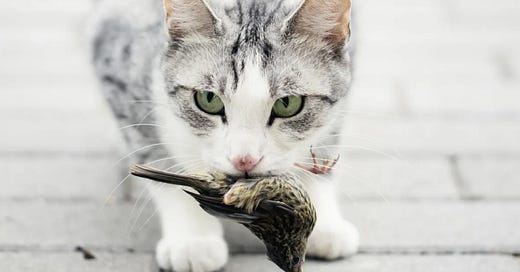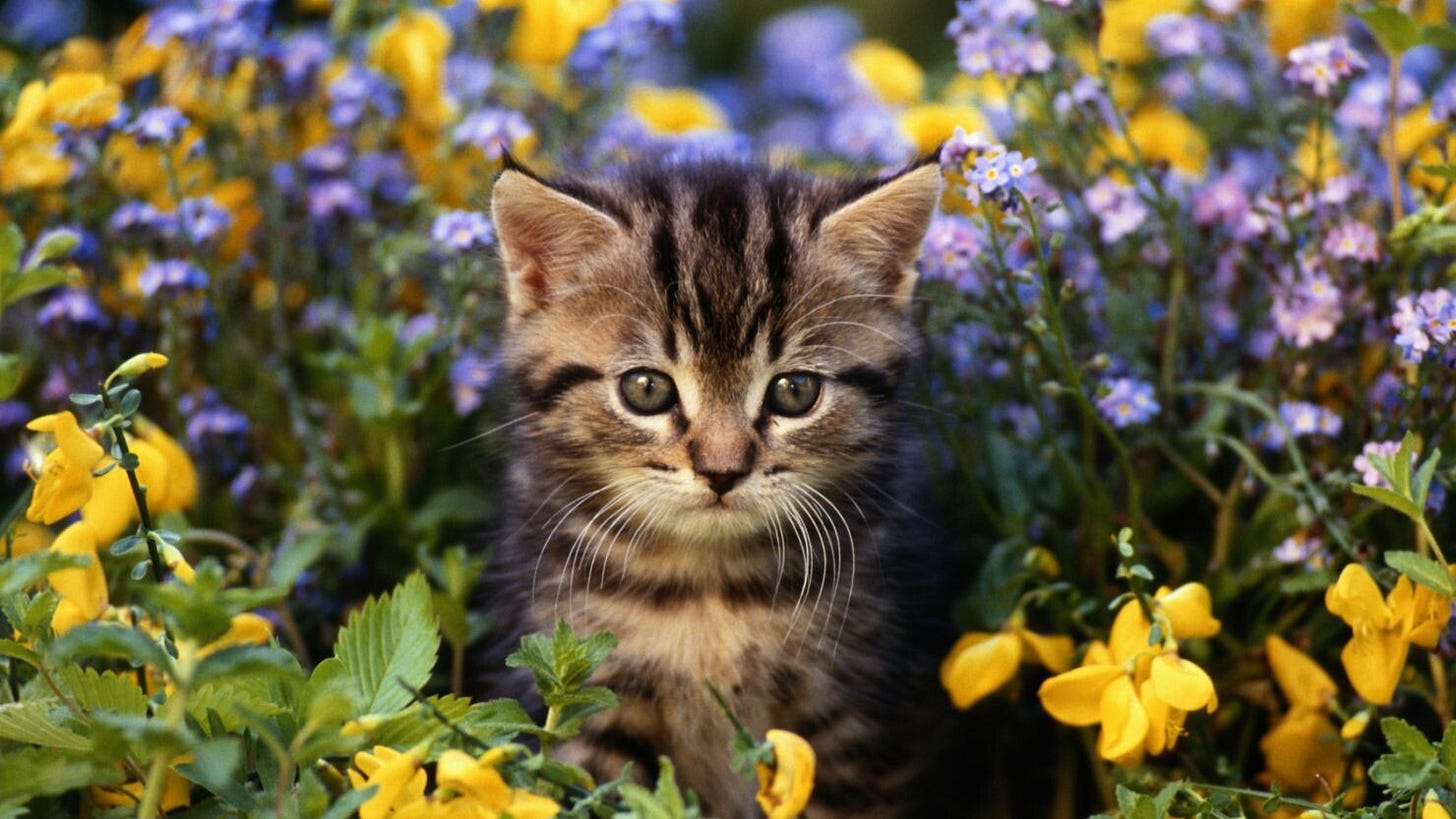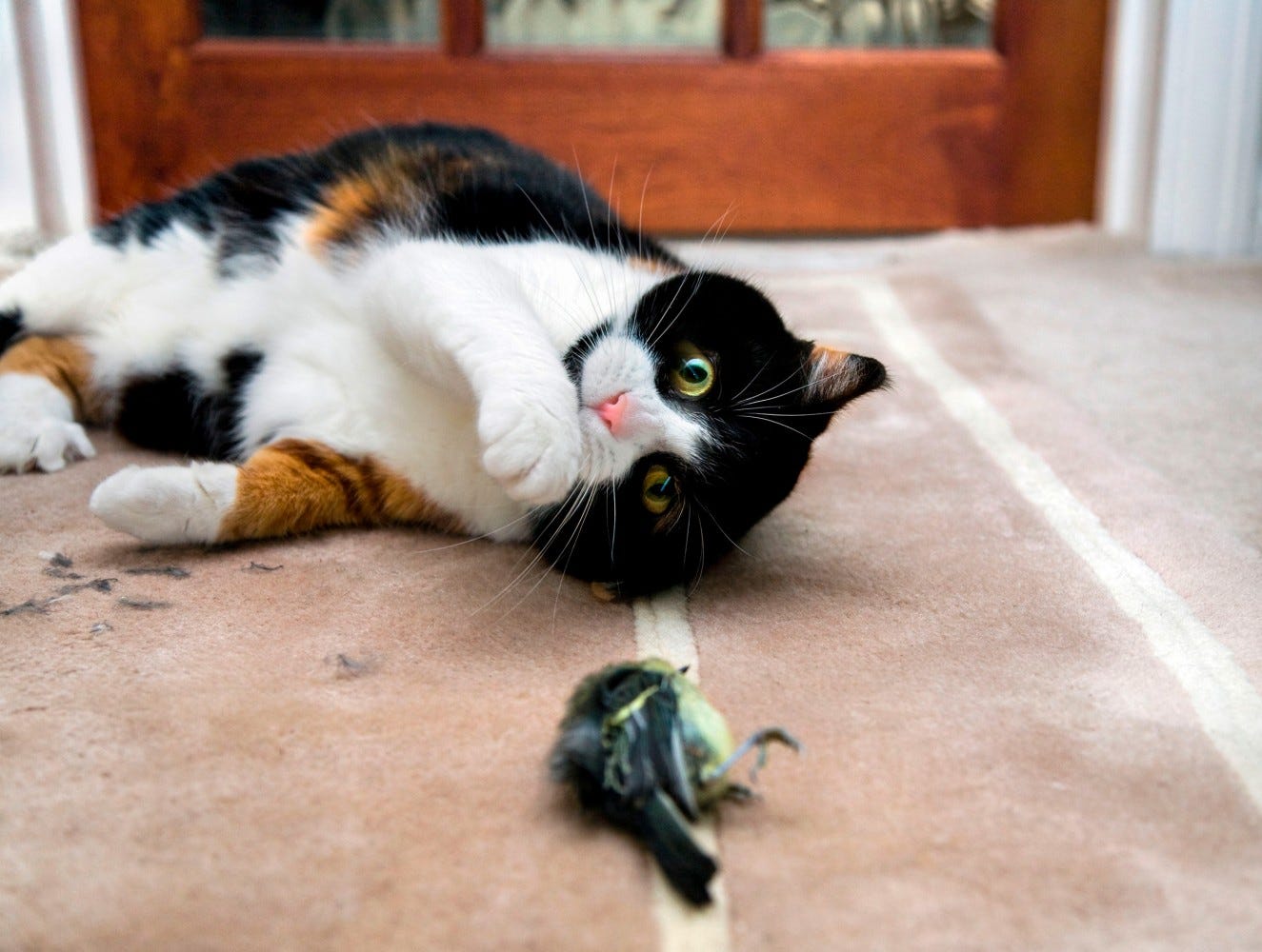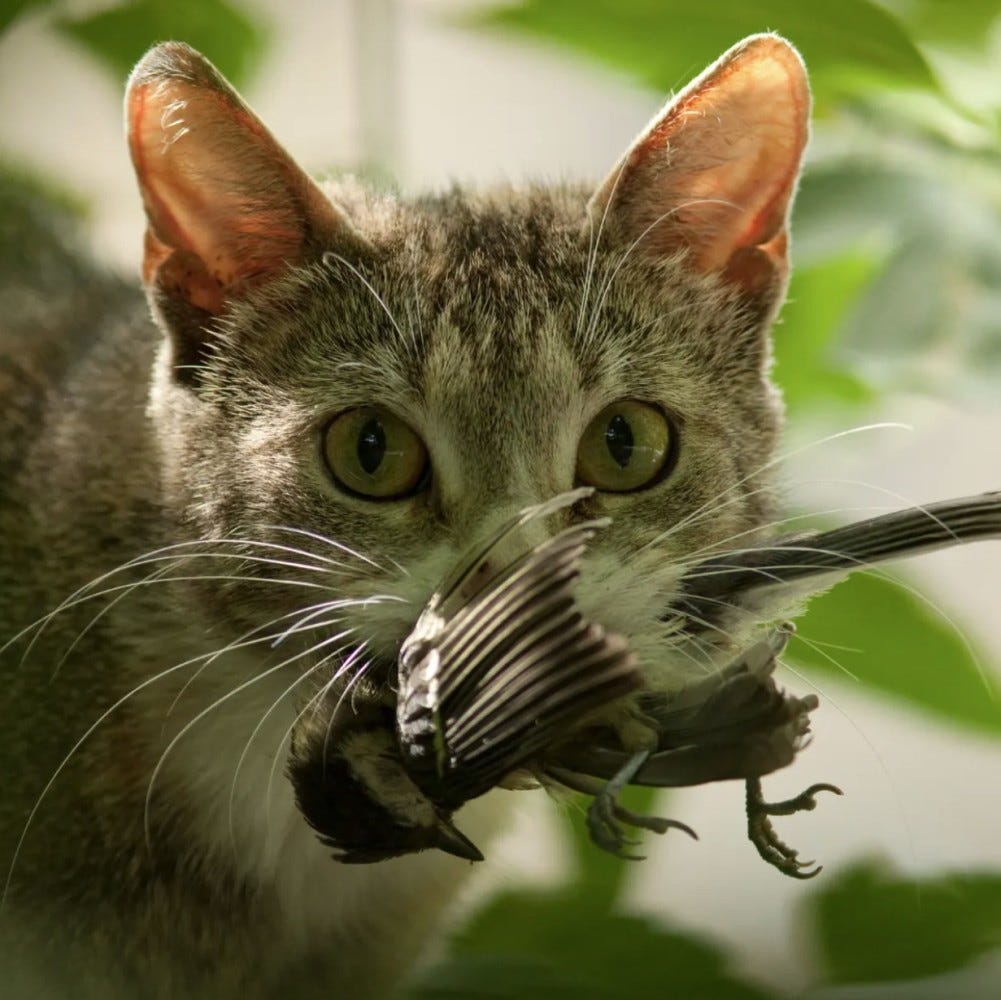A majority of domestic cats get to roam. But they are pets just as are dogs - why do cats get the freedom to roam while dogs do not? Especially also when you consider that domesticated cats, unlike domesticated dogs, are out there killing on a daily basis?
For anyone interested in and engaged around the topics or restoration, rewilding and protecting nature - the very idea of roaming domestic cats should be more than a little worrisome, and increasingly so. However, for the most part, we look the other way because, hey, they're just so damn adorable, right?
Disclaimer here, I've often had cats. When I lived in the Middle East, they were indoor cats as there were bigger predators out there. Now that I live in rural Switzerland, our cat gets to roam ... and, if you're a cat 'owner' (let's be real here, they own us), you'll occasionally find them bringing 'presents' to your door in the form of dead birds or the head of a mouse, or some innards or some such. So I pick that up and bring it to our pet cemetery, a big rock pile out in the garden - and there those dead birds and mice heads and innards continue their journey (with insects and other critters no doubt enjoying those meals). All of this is pretty gross (especially when you pick up innards) - but I do it and then go on adoring our purring bundle of joyous fur.
I think what I've described is pretty much the norm for most pet owners with roaming domestic cats. I once read that, in the US, 70% of Americans keep their cats indoors, while only 30% allow them to roam. And in Europe that number was exactly inverse. The reason is simple - in the US there are bigger predators, in Europe (for a big part of it), that's not a concern. Ah, just found where I read that - it was in this 2022 Guardian article.
A 2023 Guardian article reports that, in Australia, around "71% of domestic cats are able to roam – killing an estimated 323m native animals each year."
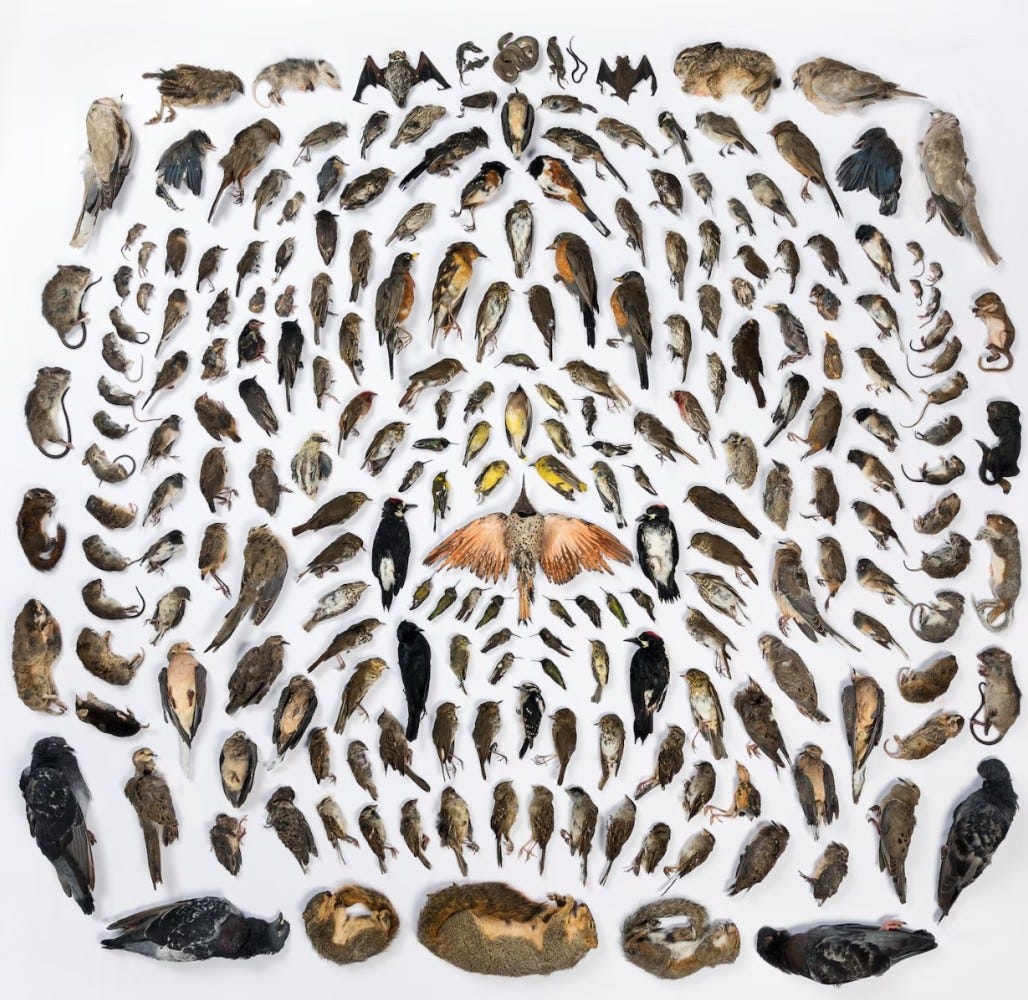
The Australian government apparently has focused on a plan to tackle feral cats - now conservation groups argue that roaming domestic cats also need addressing. In the article, Professor Sarah Legge highlights that domestic cats, "hunt at a lower rate than a feral cat, but because pet cats live at really high density in towns and suburbs, the predation toll per square kilometer is actually much higher than it is out in the bush." Her research shows that domestic cats kill "up to 50 times more animals per square kilometer in urban areas than feral cats kill in natural environments."
This is, of course, a global issue. According to the International Fund for Animal Welfare estimates that there are over 220 million domestic cats around the world. In the US, ever third household has a cat and the Scientific American reports in this 2020 podcast, "recent studies find that outdoor cats in North America take out between 10 and 30 billion birds and mammals each year." As I google for more insights, I come across more big numbers. In the UK cats apparently kill 160 to 270 million animals every year - a forth of which are birds.
So, what to do? I live with a very happy pet cat that's allowed to roam outside, around the farm, beyond the farm, down to the woods and the pond ... anything goes and there's little danger for the cat, other than the occasional skirmish with other cats. But yes, I know. And you know, And we all know - cats are killers. Our many wonderful pets kill, annually and collectively, in the billions.
Cat Wars: The Devastating Consequences of a Cuddly Killer. To dive deeper into this topic, consider reading the book by Peter Marra and Chris Santella. The blurb suggests that the book comes with proposed solutions that "foresee a time when wildlife and humans are no longer vulnerable to the impacts of free-ranging cats." If you don't have the time to read the book, read this interview with Peter Mara. In it, he explains it all. Good interview!
That 2022 guardian article mentioned that an entire town in Germany was mandated to keep cats indoors for three years, to protect the ground-nesting crested lark. To enforce this, townspeople were held to account with huge fines - 500 Euro for a cat found outside - and a whopping 50'000 Euro if a cat was found to have killed one of those endangered larks.
This is an extreme example ... but, seriously, were do we go? Do we just continue to allow our wonderful furry friends to do what they've always done - and the thing that many of us think is important for their wellbeing - or will we, at some point, manage to look beyond the 'adorable' and take into account the slaughter? Again, we're talking about billions of annually killed animals. As much as I love to watch our wonderful cat roam out there, climbing our apple trees (as she's doing in below picture), stalking through tall grass, perfectly still before the hole of an unsuspecting vole ... I wonder.
Rewilders and restorers and conservationists try to help bring about a revival, a return to more biodiversity-rich environments. Aren't we shooting ourselves in our many feet if we, at the same time, do nothing about domesticated cats?
👉 A guide for a cat's healthy indoor life
👉 A guide to let your cat roam but reduce hunting behaviors
The easy answer would be to simply mandate pet cats around the world to be indoor cats, period. But as easy as that answer factually is, as challenging it is from an emotional point of view ... after all, look at them! We want the best for them! They're incredible, marvelous purr-meisters and we love them - how can we lock them in when all they want to do is be out there and ... kill billions of animals?
Right now, both our dog and our cat are deep asleep: the dog after a long walk on the leash; the cat after an undoubtedly eventful night out. I cleaned up the innards on the doorstep this morning. Why does the cat get this very different treatment? Is it just because they're adorable? Or does it go deeper?
I'd love to hear your thoughts on this, I really would.


